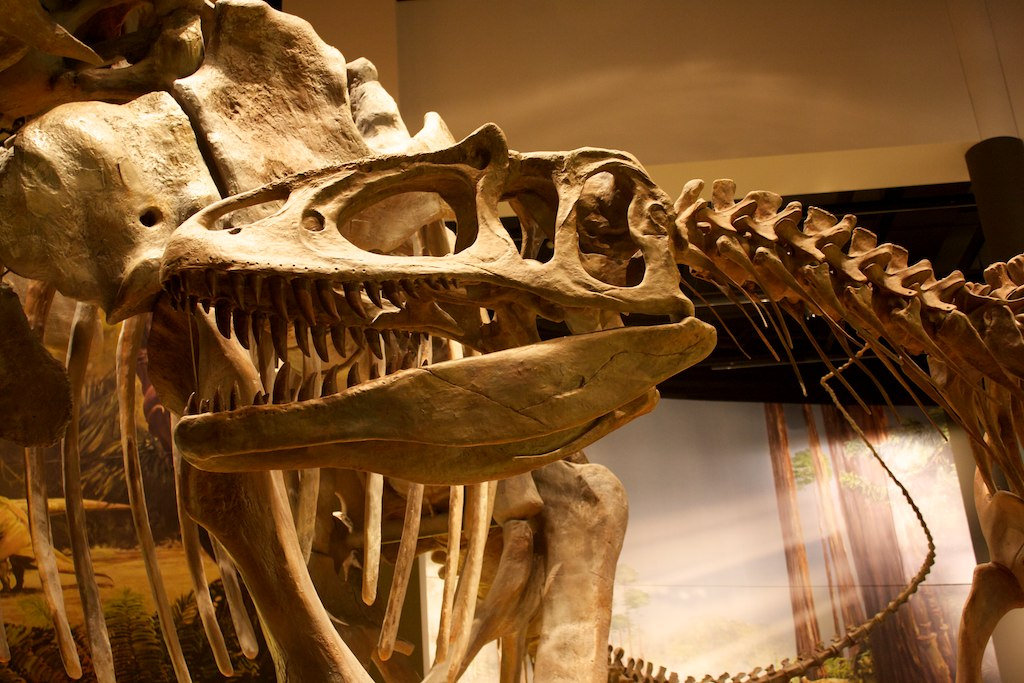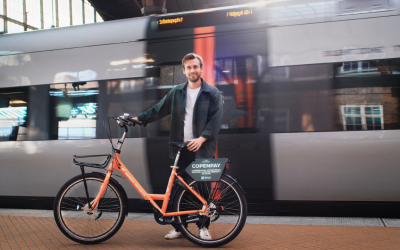It’s time to bust some destination marketing myths. As consumer behaviour evolves, older models for promoting a destination are crumbling and it’s important to know why and what you can do about it. Is your destination ready?
Here are four destination marketing ideas whose days are numbered:
Idea 1: That there is a business case for mass reach
Reaching consumers in any medium with any message and hoping that a few actually visit your destination is simply not enough. Your destination marketing organization (DMO) can’t assume that mass reach will have any impact on your visitor economy or visitation levels.
You need more sophisticated marketing techniques that actually look at how many visitors you need and how to get the right visitors to your destination.
Put it this way: If you could either spend money to advertise to a million random people with your message, or spend the same amount to build a connection with a few thousand people who are raving fans and will definitely tell their friends about your destination, what would you choose?
Instead: Pay attention to metrics that actually qualify whether your message resonated, even if the potential visitors are high in the sales funnel.
Idea 2: That web traffic is a measure of success
Web traffic is effectively the equivalent of reach, but measured online. It is the ultimate example of dashboard driving. Taking your eyes off the road by focusing here will cripple your ability to respond to the people who actually love your destination. You can buy as many visitors for your website as you want through Google AdWords, but why? One common reason is that high numbers make for an impressive report to your board, but you have to question whether this is the best investment of your funds.
Two years from now your DMO may not even need a website thanks to Destinations on Google and other services. This is a disruption, but it comes with huge opportunities. Large DMOs can then save themselves a few million dollars a year on a website.
Organic web traffic is a much better metric. Are you helping consumers with valuable content, or are you inserting a step into an otherwise natural path to purchase? Bringing people to a DMO website is an artificial step on a journey that simply allows you to measure the impact of your investments, unless you’re enhancing that journey with your content. The best indicator that your content is valuable is whether people are sharing or searching for what you’ve produced.
Instead: Forget about web traffic and think about about how to add valuable content to the internet, whether it’s on your site or elsewhere. You want this content to be shared (this is the new word-of-mouth promotion) and you want it to be found through search engines.
Idea 3: That every destination needs a visitor centre in a brick-and-mortar location
Visitor centres can be likened to the offline manifestation of a DMO website. If you aren’t careful, they can become an artificial step in the traveller’s journey. Why do you need visitors to go through your stationary visitor centre? Why not take your services to them instead?
Your DMO can now provide excellent service to visitors online, from anywhere. Tools like SMS, TripAdvisor, other social media sites, direct messaging and email help provide the same service you would give people at your visitor centre, but now you can also do it before and after their trip. To begin with, your existing visitor centre staff can do this from their brick-and-mortar location. Many destinations are also creating mobile visitor servicing locations that enable them to locate where tourists are to add value to the traveler experience.
Instead: Ask yourself how your investment in a visitor centre increases the economic spend or visitor dispersal or length of stay in your destination. If it doesn’t, think about testing a different approach. This way of thinking represents an evolution in visitor servicing, not a deconstruction. It doesn’t mean letting go of staff or losing your in-person touch points, it simply means doing it in a modern and mobile way that meets the needs of today’s visitors.
Idea 4: That promotion is the DMO’s responsibility
Destination promotion is no longer the responsibility of the DMO. Many DMOs are reliant on government funding, without which it has been difficult for the fragmented tourism industry to organize and to collect enough money to buy media. A century ago, tourism organizations would pool funds and make brochures to place in the nearby town. Later, these groups began buying radio ads and TV ads, and now all of a sudden, everyone can tell their own stories, including consumers, and that’s why the role of the DMO is being fundamentally challenged.
Instead: At the moment, many DMOs remain heavily invested in promoting their message out to the world (see points 1 and 2) but there are alternatives that could present a better investment. Developing remarkable experiences that consumers will share, managing word of mouth, improving the destination experience and creating valuable content that helps to tell your story might all offer improved ROI compared to purchasing people’s attention with advertising.
Today’s DMOs need to lead the destination toward a collective vision so that everyone’s experience aligns with what that place wants to be.
Be aware of the changes and be ready for the opportunities
Your DMO needs to be having these conversations at the executive and board levels. Burying your head in the sand and protecting the status quo is doing your destination a disservice. There are exciting alternatives to the promotional methods of the past that help solve some of the biggest challenges destinations face. Adapting to rally tourism operators and partners in this new world will show the true value a DMO brings.
Related reading: Are you invested in the right business models?
Featured image credit: Chris Dodds, Flickr









Great ideas here Rodney. What I love is your lateral approach. So refreshing in our digitally swamped world. Experience and sharing are key to success for a DMO. As an example, in Mid Wales we in the tourism industry have been subjected to a logistics exercise over peak season involving the transportation of wind turbines along our tourist routes. Linear thinking (transport logistics) says do it 5 days a week. Lateral says Friday is a changeover day as well as Saturday -best revise the schedule. It took my guests twice as long to get here last Friday. Accessibility is a huge part of the visitor experience. Perceptions of accessibility are shaped by frequency,actual distance and time. My point is that for any organisation looking to the dashboard for all the answers is,as you say, a recipe for disaster. Time for some outside the box thinking.
Thanks Margaret. Your challenge doesn’t seem insurmountable. Faced with long lines (traffic) ask yourself, ‘what would Disney do?’!
Hi Rodney,
One of the best posts I have recently seen on destination marketing. We are working for a client who asked us to do a quick scan on their DMO and in fact your post summarizes exactly what we are advising them. We have actaully also added that the DMO does not need a website for all the reasons you mention above. Rather, as one of their services, they should focus more on helping local entrepreneurs and other organisations improve digital presence and engaging with their target market.
Thanks!
Nicolaas
Thanks for your thoughts Nicholas. Every destination is entirely unique. In some cases, visitors centers are critical. In some cases, unique content on DMO websites can add incredible value to the customer journey. What’s important is to critically analyze investments based on objectives, and a clear strategy.
Hello Rodney! This certainly is an interesting topic. I work for a tech company focusing on travel tech. Our focus has recently been on how to effectively digitalise the visitors centre. Today it is as you say done through destination webs, social media and trip advisor. However we have changed the focus around a bit here which I Hope you could find interesting. We have created a web application called Destinero.com (it works well also in English, although all is built on the Swedish language) Just like Social Media made everyone a publicist, Destinero can make anyone a Destination marketeer. In the tool anyone can build lists with points of interest on their destinations, without having to rely on a central DMO. Now we see hotels taking the drivers seat and building their receptions as the digital information points for whats to see on the destination since they have so much more digital traffic as well as physical traffic in their premises. Also the hotel displays other peoples lists and can thus take advantage of local experts knowledge in a very easy way. Check out for instance https://www.destinero.com/list/3650 Here the hotel lists different events of interest. Data is derived from Google my business and the Basetool-Platform.
Thanks for the read, and opportunity to comment.
Some context – I’ve worked with RTOs and operators for over a decade. Brand and Marketing strategy and execution.
A couple of thoughts.
They are responsible for the promotion and I’m not sure that’s ever going to go away. But (and it is a bit one) great operators can and do drive visitation. I’ve had a theory for a few years now that DMOs are going to transition to far more management, and leadership of operators, product development, community engagement etc, as opposed to a ‘marketing’ focus.
VICs shouldn’t go away if the destination can afford to fund it (I understand that is your point too). This is speaking from experience working in the industry, running consultations in destinations, and so on. But also, as a visitor. I’ve been travelling Australia in a caravan with my family for nearly 18 months now, and plan to be for another couple of years. It’s been a heck of an insight into how people think and behave in new destinations. This has been us nearly every week (or daily) for that time. VICs have been far and away the best place for the info to retain us longer and sift through the inspo only content you get online and get the real ‘locals view’, unfiltered, and one you can trust. There’s still something about walking into a VIC and getting to touch and feel things. Add in immersive experiences, or more context beyond brochures, and even tiny destinations (e.g. Julia Creek in Outback QLD) can leave a lasting impression.
Finally, (and thanks for humouring me to this point), you could add 5. Facebook Organic. It’s remarkable to me that destinations haven’t moved on from highly oversaturated hero images, and are still not getting more into the weeds with local stories. Or, using other platforms. If a DMO is pumping out organic content on Facebook, and haven’t done anything on Tik Tok yet, they’re behind the 8 ball already. If nothing else, to close the feedback loop faster on learning what people actually engage with and what content ‘works’ these days. Hint: it’s not the oversaturated images that worked on Facebook organic 7 years ago. IMHO only.